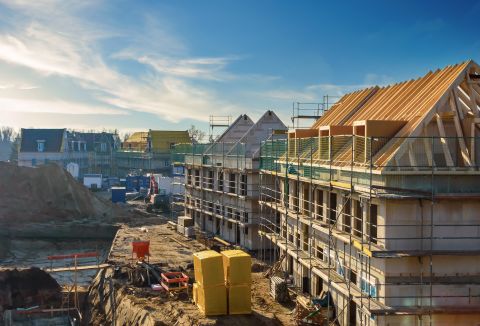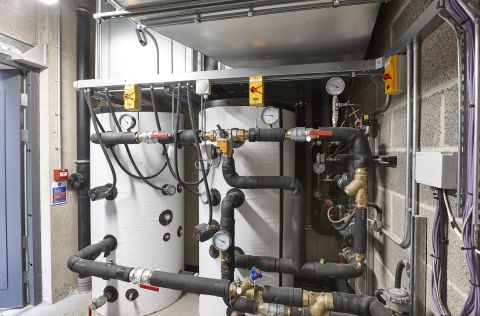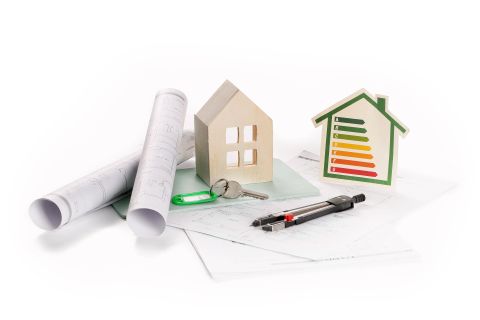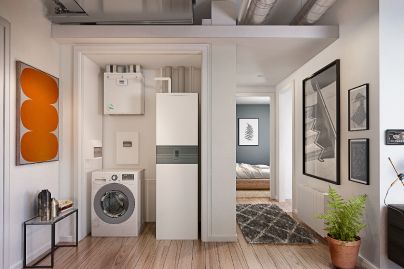Buying Guides
Our experts have put together the top things to consider for each of our product ranges. Helping you choose the best product for you and your family.
Portable Heating
Dehumidifiers
Air Purifiers
Cooling fans
Sustainability
Sustainability plays a key role in the future of Dimplex. We believe it's our moral responsibility to do what we can for future generations.

What is COP and EER?
The Coefficient of Performance (COP) and Energy Efficiency Ratio (EER) are measures of a heat pump or heating and cooling solution’s efficiency. They indicate a ratio of useful heating or cooling produced by the unit against the energy it consumes. For example, the COP of a heat pump that can provide 3kW of heat against the input of 1kW of electricity is 3. The EER that generates a cooling effect of 12BTU against the input of 1kW of electricity is 12.

How to correctly size an ambient loop heat network using diversity factors
As their name suggests, ambient loops operate at significantly lower temperatures than traditional communal high temperature heating systems. This means that a different approach is required when sizing the ambient loop distribution system. Calculation of such systems follows a procedure where diversity is used to determine the design flowrate for a development. It also determines the sizing of pipework and circulation pumps for an ambient communal network solution such as the Zeroth Energy System. The in-apartment flowrates required for the selected size of the Zeroth Heat Pumps can then be calculated.

Will the outcomes of COP26 significantly speed up the uptake of low carbon technologies?
We are all waiting to see what the real impact will be from the climate summit COP26 for the construction sector, specifically with regard to the decarbonisation of heat. One of the insights that came out of the second day of the summit, which featured a session on clean technology and innovation, was delivered by UK Prime Minister, Boris Johnson:
‘By making clean technology the most affordable, accessible and attractive choice, the default go-to in what are currently the most polluting sectors, we can cut emissions right around the world’.

Heat pumps are the future of domestic energy
Glen Dimplex Heating & Ventilation supports EHPA tour educating why

Fan coil refurbishment for improved operational efficiency
What are the key components to consider for fan coil refurbishment that could lead to improved operational efficiencies?

How is the UK Government planning to incentivise low carbon heating system installation through the Heat and Buildings Strategy?
The UK Government announced the much-anticipated Heat and Buildings Strategy on the 18th of November 2021. It revealed ambitions for the transition to low carbon buildings of the future, with plans to phase out fossil fuels in favour of electrification. The Heat and Buildings Strategy outlines how £3.9 billion of funding will be allocated in the three-year term of 2022-2025 to speed up the decarbonisation of heat.

Debunking the misconceptions of electric panel heating
Modern, energy efficient electric panel heaters that offer a high level of control to users, whilst using low carbon energy, are unrecognisable from the inefficient, clunky panel heaters of the past. Despite technological advances, the perception of electric heating mostly relates to the old technology that grew in popularity with the advent of cheaper nuclear energy in the late 1950s. Traditionally, panel heaters in homes were accompanied by storage heating to make use of the energy generated ‘off-peak’ and assist with under-utilised night-time energy available on the grid. In addition, electric heating has long been a convenient form of secondary heating, for example with the use of portable fan heaters.
Keep your family safe with Dimplex's electrical heating checklist
When used correctly, electric heaters are one of the safest ways to warm a room, making them ideal choice for family homes. As winter has arrived, now is the ideal time to evaluate your electrical heating to make sure you remain cosy and safe this season.

Glen Dimplex responds to new Building Regulation Approved Documents
This week saw the long-awaited publication of the English Building Regulations. Having contributed to the workshops and consultations that led to these new Approved Documents, we were pleased to see much of the industry feedback cited appears to have been incorporated, particularly in the case of flexibility when replacing traditional fossil fuel systems.

What are the changes to Part L implemented in June 2022?
The updates to parts of Building Regulations that deal with energy performance in Scotland and Wales are being introduced to support the net-zero trajectories in both devolved nations.

Spring clean your way to a healthy home
Whether you mark the changes of season by the meteorological calendar or the astrological calendar, spring has officially sprung. Though it may not seem like it we’re now in the season of daffodils, blossoming trees and longer days, which puts many of us in the mood for spring cleaning. Here we take a look at some of the ways you can ensure a clean, healthy home for you and your family as the year moves forward.

How does the Zeroth Energy System address domestic hot water demand and reduce primary energy use in apartments?
Domestic hot water (DHW) is typically the dominant energy load in modern, well insulated buildings. Ambient loops, such as the Zeroth Energy System can significantly reduce the annual CO2 emissions and primary energy use of large residential properties in two ways:
Balancing the DHW demand and output
Heating water to the required temperature at the point of use
We will consider how the technology achieves these reductions and what the impact is on modern developments.











